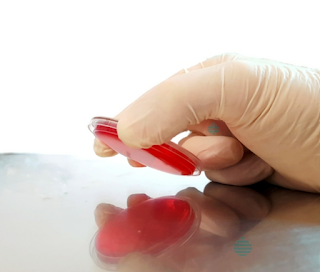Microorganisms are present everywhere in the environment and can contaminate pharmaceutical products during production. To ensure patient safety, it is important to have effective microbiological control measures in place during the manufacture of non-sterile pharmaceuticals. In this article, we will discuss some key tips on how to improve microbiological control within your facility.
The Role of Microorganisms in Non-sterile Pharmaceuticals
Microorganisms play an important role in the manufacture of non-sterile pharmaceuticals. They can be used to synthesize active ingredients, provide structure and function to the products, and help to stabilize and preserve them. In addition, microorganisms can be used to control contamination during manufacture and storage.
Factors that Affect Microorganisms in Non-sterile Pharmaceuticals
There are many factors that can affect the microorganisms present in non-sterile pharmaceuticals. Some of these factors include the manufacturing process, the type of packaging, and the storage conditions.

The manufacturing process can have a big impact on the microorganisms present in a product. For example, if a product is made in an environment that is not clean or sterile, it is more likely to be contaminated with microorganisms. Similarly, if a product is not made according to Good Manufacturing Practices (GMPs), it is also more likely to be contaminated.
The type of packaging can also affect the microorganisms present in a product. If a product is packaged in a way that does not allow air or light to reach it, microorganisms are less likely to grow. However, if a product is packaged in a way that allows air or light to reach it, microorganisms are more likely to grow.
Finally, the storage conditions can also affect the microorganisms present in a product. If a product is stored in an environment that is too cold or too hot, microorganisms are less likely to survive. However, if a product is stored in an environment that is just right, microorganisms are more likely to survive.
The Need for Improved Microbiological Control
The manufacturing of non-sterile pharmaceuticals presents a unique challenge when it comes to microbiological control. Unlike sterile products, which are manufactured using aseptic techniques, non-sterile products are not subject to the same level of control. As a result, there is a greater risk of microbial contamination during the manufacturing process.
There are a number of steps that can be taken to improve microbiological control of non-sterile pharmaceuticals. First, all manufacturing personnel should be trained in proper hygiene and cleanliness practices. Second, manufacturing equipment should be regularly cleaned and sanitized. Third, finished products should be tested for microbial contamination before they are released for sale.
Despite these measures, the risk of microbial contamination cannot be completely eliminated. Therefore, it is important for consumers to be aware of the potential risks associated with non-sterile pharmaceuticals. When choosing a non-sterile product, consumers should always select one from a reputable manufacturer that has a good track record of quality control.
Current Methods for Microbiological Control
Microbiological control is an important aspect of ensuring the safety and quality of non-sterile pharmaceuticals. There are a variety of methods that can be used to control microorganisms in this environment.
One common method is the use of disinfectants. Disinfectants are chemicals that are used to kill microorganisms on surfaces. They are typically applied using wipes or sprays and allowed to dry. Some commonly used disinfectants include quaternary ammonium compounds, bleach, and alcohol.
Another common method for microbiological control is the use of sanitizers. Sanitizers are chemicals that are used to reduce the number of microorganisms on surfaces. They typically work by creating an environment that is unfavorable for microbial growth. Some common sanitizers include chlorhexidine and iodophors.
It is important to note that disinfectants and sanitizers should not be used interchangeably. Disinfectants are designed to kill microorganisms while sanitizers are designed to reduce their numbers. Both play an important role in microbiological control but should be used according to their intended purpose.
New and Emerging Methods for Microbiological Control
Microbiological control of non-sterile pharmaceuticals is a critical process in ensuring the quality and safety of these products. There are a number of new and emerging methods for microbiological control that can be used to improve the quality and safety of these products. These new methods include:
1. Use of novel antimicrobial agents: There are a number of new antimicrobial agents that can be used for microbiological control of non-sterile pharmaceuticals. These agents have a high degree of activity against a wide range of microorganisms, including Gram-positive and Gram-negative bacteria, fungi, and viruses.
2. Use of next-generation sequencing: Next-generation sequencing (NGS) is a powerful tool that can be used to identify microorganisms present in non-sterile pharmaceuticals. NGS can also be used to determine the genetic makeup of these microorganisms, which can help in the development of targeted control strategies.
3. Use of novel disinfection technologies: There are a number of new disinfection technologies that can be used for microbiological control of non-sterile pharmaceuticals. These technologies can provide a high degree of efficacy against a wide range of microorganisms, including Gram-positive and Gram-negative bacteria, fungi, and viruses.
4. Use of microencapsulation: Microencapsulation is a technology that can be used to protect the integrity of non-sterile pharmaceuticals during storage and delivery. This technology can help to ensure the quality and safety of these products by preventing the release of microorganisms into the environment.
The best way to improve microbiological control of non-sterile pharmaceuticals is by implementing a comprehensive quality management system that includes proper cleaning and disinfection procedures, as well as regular testing and monitoring. By taking these steps, you can ensure that your products are free of harmful bacteria and contaminants.

No comments:
Post a Comment
Please don't spam. Comments having links would not be published.